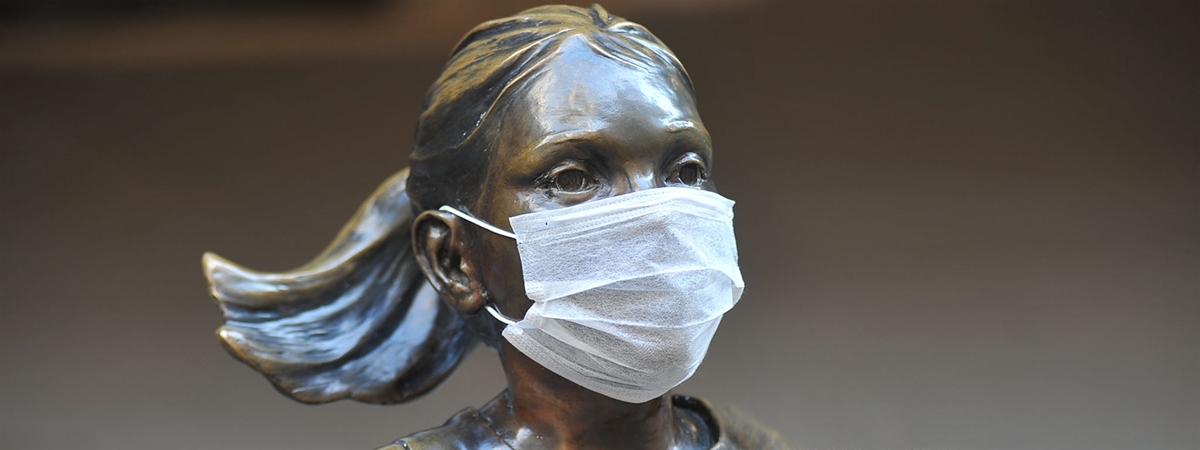Australia has a justified reputation for avoiding the super-shocks of the twenty-first century. Twice now we have been the exception to the global rule of systems failure. Ours was the only developed economy in the G20 that did not fall into recession during the global financial crisis of 2008–09, and we were one of only a handful of nations to eliminate community transmission of COVID-19 during the pandemic of 2020 and 2021.
Yet our policy ingenuity and social cohesion in the face of existential threats were undermined on both occasions by poor leadership once the immediate crisis passed. Twice now we’ve seen prime ministers at the peak of their domestic popularity fumble the reform tests they set for themselves.
When Scott Morrison broke his promise to vaccinate Australians by October 2021, voters would have felt a shiver of recognition. The manner of the backdown – not just the fact of it, but the sneaky way it was communicated – echoed Kevin Rudd’s politically fatal decision eleven years earlier to walk away from his great moral challenge of climate change.
The Liberal prime minister did not reveal the changes to his program in the formal setting of a press conference. Nor did he issue a statement on his official media site. Morrison waited until a Sunday evening, after the television news bulletins had gone to air and the first editions of the next morning’s papers had been printed, to issue a short, carefully worded statement on his Facebook account. “The Government has … not set, nor has any plans to set new targets for completing first doses,” he wrote on 11 April. “While we would like to see these doses completed before the end of the year, it is not possible to set such targets given the many uncertainties involved.” Future historians will be confronted by a deliberate gap in the official timeline. They will see the first confident announcement on the prime minister’s website last August that Australians would be at the head of the global queue for vaccines. They will see the dissembling as targets were missed, culminating in Morrison’s snippy insistence as recently as March that the revised program – at least one jab by October – was on track. But the admission that the exercise had run off the rails will not appear in the official record.
It was too smart by half. The vaccine rollout is the final and most difficult element in our great escape from the pandemic, demanding consistent leadership, public service competence and a high degree of community trust. Morrison, of all people, would know that a late-night post on Facebook, the home territory of anti-vaxxers and conspiracy theorists, risks confidence in the program. Only two months earlier, the prime minister had advised us where not to go for health advice: “Don’t go to Facebook to find out about the vaccine. Go to official government websites.”
When Rudd shelved his plans for an emissions trading scheme in 2010, he hoped to bury the announcement in the May budget papers. But the plan was foiled by journalist Lenore Taylor, who broke the story in The Sydney Morning Herald on 27 April. What the Labor prime minister should have done next was call a press conference at Parliament House to explain his decision. But he doubled down on his strategy of deflection by inviting the media to the Nepean Hospital in Penrith for a discussion of health policy. The local journalists refused to play the game. The first six questions were on climate change, and the long, tortured answers confirmed the futility of the exercise.
Rudd: “Given that international action has been slower than was originally anticipated and given the fact that the Liberal Party has now backflipped completely on this position and therefore the legislation has not been passed – given those two factors, it’s very plain that the correct course of action is to extend the implementation date.”
Compare with Morrison in 2021: “Now, I’ve been asked a bit about what our targets are. One of the things about COVID is it writes its own rules. You don’t get to set the agenda, you have to be able to respond quickly to when things change. And it’s certainly the case over the course of this past year, we’ve had to deal with a lot of changes.”
Rudd and Morrison were claiming to be both hero and innocent victim. They had steered Australia through the respective storms of the GFC and the global pandemic, thereby making us the “envy of the world.” But now sinister forces beyond their control had undermined their best intentions.
Rudd did not get away with it. The government “lost the support of around one million voters in just a fortnight,” Labor frontbencher Mark Butler wrote in his book Climate Wars. “One voter told me in my electorate of Port Adelaide, ‘I was never really sold on the whole climate issue, but was willing to back you in anyway – but when you just suddenly dropped the thing because things got too hard, you lost me. I thought you were all piss-weak.’” Within two months, Julia Gillard took Rudd’s job. Within four months, Labor was reduced to a minority government. Public satisfaction with democracy had been at a record high when Rudd led Labor into office at the 2007 election. It went into freefall in 2010, after his removal as prime minister, and by decade’s end had crashed to its lowest level since the constitutional crisis of the mid-1970s, while trust in government hit an all-time low.
Morrison had risen at the bottom of this long cycle of disillusionment; the fourth prime minister in eight years to claim power through the back door of a party-room coup. He took office in the winter of 2018 with no expectations, and exceeded them when he led his exhausted government to a narrow victory at the May 2019 election. His successful campaign was built around a relentless attack on an unpopular opponent, Bill Shorten, and a caricature of Labor’s spending and taxing policies. It was no more outrageous than Labor’s own scare campaign against the government in 2016. But Morrison made no attempt to talk up his own agenda. He assumed voters were disengaged, and directed that cynicism at his opponent. Undermining trust in government was a precondition for victory.
The prime minister drove that trust to even deeper lows with his passive and aggressive response to the Black Summer of fires, telling Australians he didn’t hold a hose, mate. All the world came to know him as the leader who had snuck off to Hawaii for a family holiday while his country burned. With expectations reset at zero, he exceeded them once more with his handling of the pandemic, only to revert to a point somewhere between the two extremes with the vaccine program. The setback might not hurt Morrison politically while voters remain comfortable with the security blankets of closed borders and economic stimulus. But a third wave of the coronavirus, requiring another extended lockdown, would test the electorate’s patience. Either way, Australia is once again in danger of snatching mediocrity from the jaws of achievement.
The key question for this essay is: can Australia restore faith in good government? Are we doomed to repeat the farce of the last decade, when we avoided the worst of the GFC only to succumb to policy gridlock and American-style electoral polarisation in the recovery? Or will the visceral experience of the pandemic allow us to reconceive the political economy of the nation?
Politicians who have only known the open economic model have been forced to provide care, and security against an invisible enemy, using the old tools of intervention. These levers are both familiar and alien at the same time. The closing of borders and the opening of the public purse to support people in lockdown came naturally enough. The difficulty has been in repairing the safety net and restoring public services that were previously entrusted to the market. COVID-19 has demonstrated a wicked genius for exploiting the gaps in the old model, most notably in the management of hotel quarantine for returned travellers, and in aged care, where the lines between private and public, and between the federal and state governments, were blurred.
Between the fires and the plague, Morrison learnt to be a more collaborative leader. He had no choice but to adapt to the realities of federation. The Commonwealth directed the economic response, but the states were responsible for their own health systems. The premiers exercised that authority at critical moments during the crisis, and elevated the standing of both levels of governments as the first and second waves were defeated. But the running of things by the Commonwealth, whether it’s the rollout of the vaccine or the safe return of Australians stranded in virus hotspots overseas, remains Morrison’s, and our, Achilles heel. While COVID-19 still burns around the globe and Australia remains poised between the elimination of community transmission and another outbreak, there is a still a risk that we slip from the short list of countries to be envied.
In 2020, we boasted the third-lowest death rate among the G20 countries, with only South Korea and China ahead of us, and were grateful that we didn’t have a leader like Donald Trump or Boris Johnson, who had neither the humility to heed the advice of experts nor the discipline to hold the line of lockdown. In June 2021, the United States still had the highest death toll in the world, and the UK the highest in Europe. But the perverse incentives of the coronavirus have inspired them to vaccinate their people as quickly as possible. The US is leading the G20, with 41.5 per cent of the population fully vaccinated, while the UK is second, with 39 per cent of the population receiving two jabs. Australia was at the bottom of the table, with just 2.2 per cent fully vaccinated. Even Zimbabwe and Myanmar had higher rates of vaccination at the time of writing.
This essay does not pretend to cover every lesson of the pandemic when the end point remains unknowable. The aim is to identify those parts of the old model that are irredeemably broken, and to provide a new answer to the question of what government should be responsible for in the twenty-first century.
The best place to begin the search for that answer happens to be the United States, where the great new policy experiment of intervention is also underway, with the results to shape the global economy for the remainder of the decade and beyond.
CONTINUE READING
This is an extract from George Megalogenis's Quarterly Essay, Exit Strategy: Politics After the Pandemic. To read the full essay, subscribe or buy the book.
ALSO FROM QUARTERLY ESSAY












